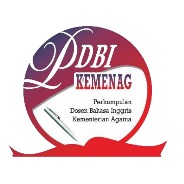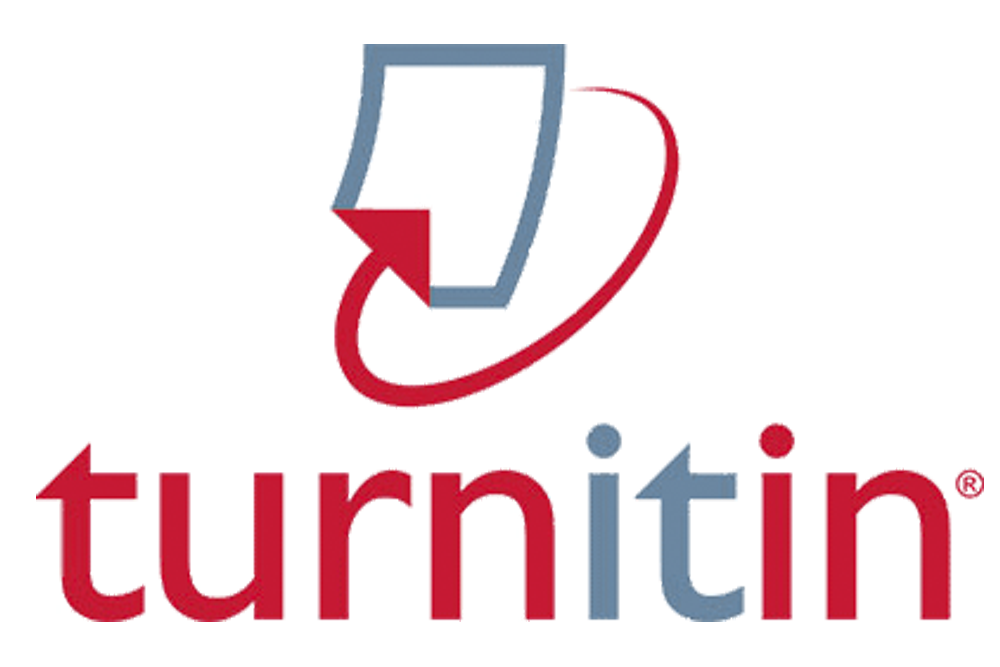The Implication of Flipped Learning Model in Tertiary Critical Reading Class
Abstract
This study investigated the implication of Flipped Learning Model toward tertiary students’ critical reading skill. Classroom action research was carried out to conduct the study. Critical reading test, observation of students’ learning participation outside and inside class, and interview were administered to gather the data. This study used descriptive analysis. Students’ prior critical reading skill was considerably low. They did not have self-initiative to practice their reading skill. After implementing this model for three cycles, progress on their critical reading could be noticed. Flipped Learning Model could trigger students’ learning participation both outside and inside classrooms. Yet, students still needed teacher’s assistance to direct their learning process. Flipped model of instruction encouraged students to be able to analyze and evaluate the texts. However, students still had difficulty in internalizing the information to formulate ideas as creating skill needs more practice to achieve. Appropriate learning materials, students’ awareness, and environmental supports influenced the implication of Flipped Learning Model implementation.
Keywords
Full Text:
PDFReferences
Alghail, A. A. A. & Mahfoodh, O. H. A. (2016). Academic reading difficulties encountered by international graduate students in a Malaysian university. Issues in Educational Research, 26(3), 369-386.
Al-Rowais, A. S. (2014). The impact of flipped learning model on achievement and attitudes in higher education. International Journal for Cross-Disciplinary Subjects in Education, 4(1), 1914-1921.
Alsowat, H. (2016) An EFL flipped classroom teaching model: Effects on English language higher-order thinking skills, student engagement, and satisfaction. Journal of Education and Practice, 7(9), 108–121.
Apriani, E. (2016). A New Literacy: The Role of Technology to Develop Student’s Character. Ta’dib:Journal of Islamic Education (Jurnal Pendidikan Islam), 21(1), 59 - 72. https://doi.org/https://doi.org/10.19109/tjie.v21i1.742.
Apriani, E. (2016). Using The Think-Pair-Share (TPS) Strategy to Enhance Students’ Reading Achievement of The Seventh Grade at MTsN Lumpatan. Belajea; Jurnal Pendidikan Islam, 1(2). doi:http://dx.doi.org/10.29240/bjpi.v1i2.110.
Apriani, E., Supardan, D., Sartika, E., Suparjo, S., & Hakim, I. N. (2019). UTILIZING ICT TO DEVELOP STUDENT’S LANGUAGE ETHIC AT ISLAMIC UNIVERSITY. POTENSIA: Jurnal Kependidikan Islam, 5(1), 1-14.
Apriani, E., & Hidayah, J. (2019). The ICT Used by the English Lecturers for Non-English Study Program Students at IAIN Curup. Vision: Journal for Language and Foreign Language Learning, 8(1), 26-37.
Asilioglu, B. (2008). Importance and means of critical reading for cognitive learning. Journal of D.U Ziya Gokalp Faculty of Education,10 -11.
Asmara, R., Kusumaningrum, W. R., Wulansari, A., Munirah. & Hersulastuti. (2019). Measuring the effect of flipped classroom model on critical thinking skills. 2nd Workshop on Language, Literature and Society for Education. Retrieved from http://dx.doi.org/10.4108/ eai.21-12-2018.2282743
Attaprechakul, D. (2013). Inference strategies to improve reading comprehension of challenging texts. English Language Teaching, 6(3), 82-91.
Balasubramaniana, K, Jaykumar, V. & Fukey, L. N. (2014). A study on “student preference toward the use of Edmodo as a learning platform to create responsible learning environment”. Procedia – Social and Behavioral Sciences, 144, 416-422.
Bishop, J. L. & Verleger, M. A. (2013). The flipped classroom: A survey of the research. 120th American Society for Engineering Education Conference Annual Conference and Exposition, 30, 1-18.
Chea, C. C. & Huan, J. T. J. (2019). Higher education 4.0: The possibilities and challenges. Journal of Social Science and Humanities, 5(2), 81-85.
Crouch, C. H. & Mazur, E. (2001). Peer instruction: Ten years of experience and results. American Journal of Physics, 69(9), 970-977.
DeRuisseau, L. R. (2016). The flipped classroom allows for more class time devoted to critical thinking. Advances in Physiology Education, 40(4), 522-528.
Flipped Learning Network. (2014). What is flipped learning? Retrieved from https://flippedlearning.org/wp-content/uploads/2016/07/ FLIP handout_FNL_Web.pdf
Hermida, J. (2009). The importance of teaching academic reading skills in first-year university courses. The International Journal of Research and Review, 3, 20-30.
Hudson, T. (2007). Teaching second language reading. Oxford: Oxford University Press.
Inderawati, R., Sofendi, Purnomo, M.E., Vianty, M. & Suhendi, D. (2019). Students’ engagement in utilizing technology for learning support. English Franca: Academic Journal of English Language and Education, 3(2). 181-196.
Karaca, P. O. & Ogus, F. G. (2017). A conceptual evaluation on critical reading. IOSR Journal of Humanities and Social Science (IOSR-JHSS), 22(12), 38-41. doi: 10.9790/0837-2212073841
Karimi, M. & Hamzavi, R. (2017). The effect of flipped model of instruction on EFL learners’ reading comprehension: Learners’ attitudes in focus. Advances in Language and Literary Studies, 8(1), 95-103.
Kress, G. (2003). Literacy in the new media age. London: Routledge.
Kurland, D. J. (2000). Critical reading vs critical thinking. Retrieved from http://www.criticalreading.com
Lu, S. (2016). A tentative research on the college English reading teaching mode based on the theory of the flipped classroom. 5th International Conference on Social Science, Education, and Humanities Research (SSEHR). 1660-1663.
Ministry of Education and Culture. (2018). Mendikbud imbau guru terus kembangkan model pembelajaran HOTS. Retrieved from https://www.kemdikbud.go.id/.
Muhlis, A. (2017). Foreign language reading anxiety among Indonesian EFL senior high school students. English Franca: Academic Journal of English Language and Education, 1(1), 19-44.
Ndethiu, S. M. (2017). Critical reading skills for the 21st century: The role of universities. IOSR Journal of Humanities and Social Science (IOSR-JHSS), 22(12), 53-59. doi: 10.9790/0837-2212055359
Par, L. (2018). The EFL students’ critical reading skills across cognitive styles. Journal of English Education and Linguistics Studies, 5(1), 73-96.
Pardede, P. (2007). Developing critical reading in EFL classroom. FKIP-UKI English Department Bimonthly Collegiate Forum, 1(1), 1-16.
Pirozzi, R. (2003). Critical reading, critical thinking (2nd ed.). New York. Longman.
Schleischer, A. (2019). PISA 2018: Insights and interpretations. Paris: OECD Publishing.
Sharples, M., Adams, A., Ferguson, R., Gaved, M., McAndrew, P., Rienties, B., Weller, M. & Whitelock, D. (2014). Innovating pedagogy 2014: Open university innovation report 3. Retrieved from http://www. openuniversity.edu/sites/www.openuniversity.edu/files
Stringer, E.T. (2007). Action research (3rd ed). California: Sage Publications Inc.
Students Learning Development University of Leicester. (2009). What is critical reading? Retrieved from https://www2.le.ac.uk/offices/ld/ resources/studyguides-pdfs/writing-skills-pdfs/critical-reading-v1%200.pdf
Sunggingwati, D. & Nguyen, H. T. M. (2013). Teachers’ questioning in reading lessons: A case study in Indonesia. Electronic Journal of Foreign Language Teaching, 10(1), 80-95.
University Technology of Sydney. (2017). Critical reading. Retrieved from https://www.uts.edu.au/current-students/support/helps/self-help resources /reading/critical-reading
Walz, J. (2001). Critical reading and the internet. The French Review, 74(6), 1193-1205.
Wu, W. C. V., Chen, H, J. S. & Yang J. C. (2017). Creating an online learning community in a flipped classroom to enhance EFL learners’ oral proficiency. Educational Technology & Society, 20(2), 142–157.
Zin, Z. M. & Eng, W. B. (2014). Relationship between critical thinking dispositions and critical reading skills of Malaysian ESL learners. The Asian EFL Journal Quarterly, 16(3), 41-68.
Zin, Z. M., Eng, B. E. & Rafik-Galea, S. (2014). Critical reading ability and its relation to L2 proficiency of Malaysian ESL learners. The Southeast Asian Journal of English Language Studies, 20(2), 43-54.
DOI: http://dx.doi.org/10.29240/ef.v4i2.1793
Refbacks
- There are currently no refbacks.
Copyright (c) 2020 Yunani Atmanegara, Rahma Dianti

This work is licensed under a Creative Commons Attribution-NonCommercial-ShareAlike 4.0 International License.
INDEXED BY:
 This work is licensed under a Creative Commons Attribution-NonCommercial-ShareAlike 4.0 International License
This work is licensed under a Creative Commons Attribution-NonCommercial-ShareAlike 4.0 International License
@ ENGLISH FRANCA : Academic Journal of English Language and Education
Jl. Dr. AK Gani No 1 Dusun Curup, Rejang Lebong Regency, Bengkulu Province, Indonesia, 39119.
Dr. Eka Apriani, M.Pd., email: efranca@iaincurup.ac.id, eka.apriani@iaincurup.ac.id.





.png)












